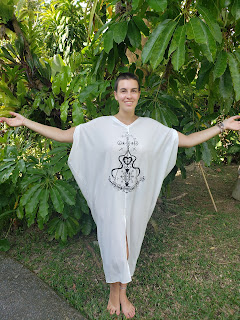Shop less, mend more: making more sustainable fashion choices
The fashion industry is one of the world’s most polluting.
Every day, most of us dress ourselves in items churned out by what is arguably the world’s second-most polluting industry.
Reportedly topped only by oil, the fashion industry is contributing to major environmental destruction – mainly because consumers insist on buying so many clothes at such cheap prices.
Water is a significant part of the problem. Textile manufacturing uses huge amounts of water, much of which gets flushed into waterways laden with contaminants such as bleaches, acids, inks and dyes. Horrifyingly, farmers in parts of China and India are reportedly predicting fashion’s next biggest hues by the colour of rivers tainted by textile industry runoff. (Look out for the 2016 documentary River Blue.) Fast fashion has terrible impacts on people, too, with workers in developing nations often paid a pittance to labour in unsafe conditions.
Alternatives do exist. The solution lies in buying less and choosing better quality items that are made as ethically as possible. But how to tell good brands from bad? Our guide to ethical fashion navigates the conundrum.
Buy clothes made locally by ethical labels
Step one is choosing brands that consider the planet and their workers. The desire to wear cheap new looks daily has led to offshore manufacturing in often deplorable circumstances – buying local, well-made pieces can sidestep all that.
Avoid fabrics made using petroleum and chemicals
Think beyond where or how clothing is made, to exactly what each piece is made from. Where possible, skip petroleum-based synthetics such as polyester and nylon, which are actually plastics that take forever to break down once tossed. Each time such fabrics are washed, they shed thousands of microfibres that end up polluting rivers and oceans.
Natural fabrics must also be selected with care. About half the world’s clothes and textiles are made from cotton, usually grown with pesticides and requiring mammoth water inputs. Bamboo has been touted as a more ethical option, but while the plant is farmed sustainably, toxic chemicals are often used to turn bamboo into fabric.
Organic cotton and bamboo linen are better, as is hemp, linen, silk and wool. Lyocell, made from natural cellulose found in wood pulp (harvested from sustainably farmed forest plantations), also rates fairly well. Some brands are even recycling waste into fabric.
“Choosing better fabrics is essential to us transforming this industry for the better,” says Clara Vuletich, a Sydney-based sustainability strategist who works with Australian fashion brands. “If you consciously decide to purchase a garment made using a recycled material or an exciting new fibre, such as cruelty-free leather made in a lab, you are supporting start-up companies creating new markets, and avoiding the toxic impacts associated with conventional textiles.”




Comments